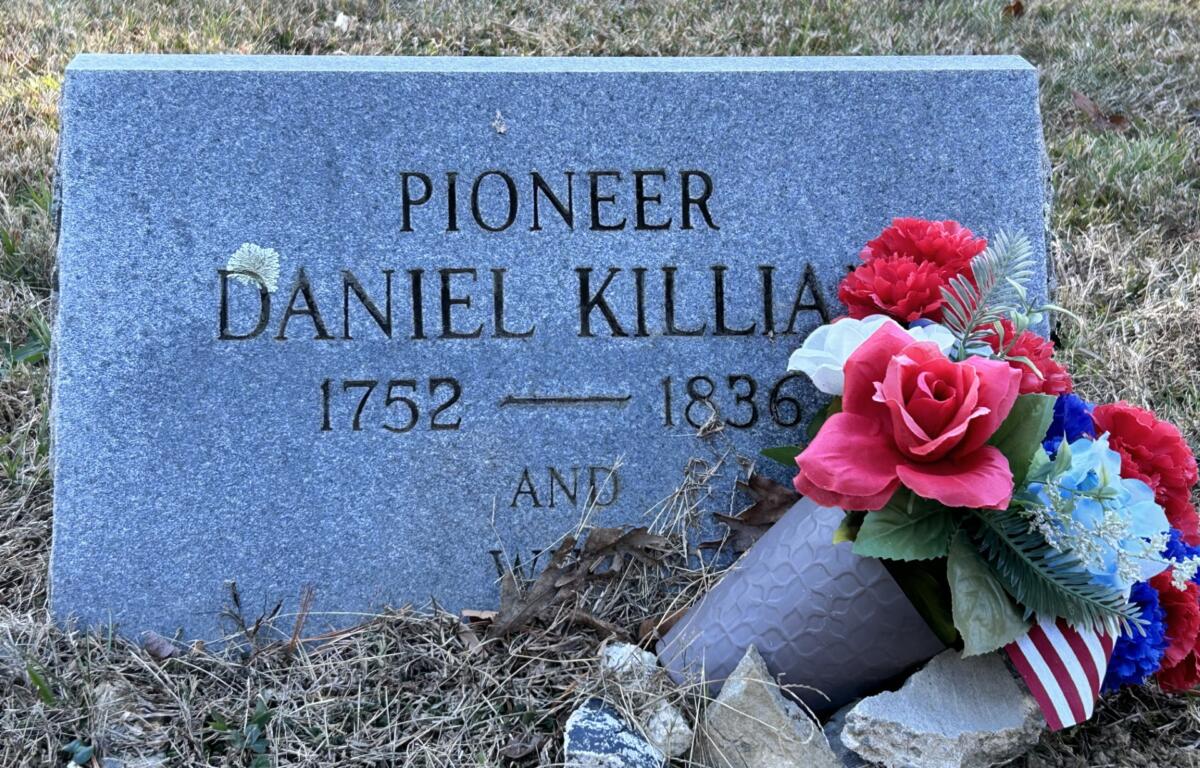EDITOR’S NOTE: Everyone has a story — some more well-known than others. Across Western North Carolina, so much history is buried below the surface. Six feet under. With this series, we introduce you to some of the people who have left marks big and small on this special place we call home.
Daniel Killian (1752-1836), a pioneer who settled the Beaverdam Creek area of North Asheville, hosted the founder of the American branch of Methodism in his home nearly a dozen times.
—–
Back when Asheville was a frontier town, Francis Asbury rode through on his horse, bringing his Bible and the words of Methodist founder John Wesley with him.
Asbury needed a bed on which to rest his weary rear during his arduous journeys. Daniel Killian not only opened his home, but also built an entire bedroom for the preacher.
Daniel Killian
Daniel Killian was born on May 12, 1752, in Lincoln County, N.C. to German immigrants. Andreas and Mary Killian had left their home country for the New World in 1732. Daniel was one of four children the couple had.
Religious fervor was common in the Killian family. Their ancestor, John Killian, was a priest who sided with Martin Luther during the Protestant Reformation in the early 16th century.
According to the website of Killian’s descendent, Andreas Killian, Daniel Killian received half of the land his father owned in Lincoln County in the will. His younger brother Samuel received the other half. Daniel’s allotment amounted to 293 acres on Clark’s Creek near Newton, N.C.
At some point after his father’s death and prior to the 1800 census, Killian, and his wife, Osley M. Baker, moved to the Beaverdam Creek area of Burke County. On Dec. 2, 1797, Killian was officially appropriated 200 acres on the banks of the creek.
According to the Asheville Citizen-Times, when the Killian’s moved to Beaverdam Creek, “their only neighbors were Indians.”
Beaverdam Creek was incorporated into Buncombe County shortly after the Killian’s moved there when Burke County was divided up. The Beaverdam Creek neighborhood was annexed much later into Asheville. Today, the area is north of downtown and east of Woodfin.
The move might have been involuntary. Killian may have fought on both sides of the American Revolutionary War. Research done by Asheville Citizen-Times columnist Rob Neufeld indicates Killian may have been forced out of Lincoln County due to his association with the Crown.
Loyalists to King George III were thought of poorly in the patriotic new nation. The Killian’s might have been forced out by the colonists after the war, fleeing to the backcountry north of Asheville for safety.

Francis Asbury
John Wesley, the founder of the Methodist movement in England, became famous for his unorthodox preaching in the Anglican Church, demanding parishioners to devote themselves fully to God.
Wesley sent two bishops to America, Francis Asbury and Thomas Coke, to spread the Gospel via circuit riding around the Colonies.
Asbury was born in Staffordshire, England in 1745. He began preaching at the ripe age of 18. Wesley’s disciple arrived in the New World in 1771.
According to historical documentation by Asbury Memorial United Methodist Church, Asbury “traveled over 250,000 miles on horseback and preached 16,500 sermons,” orating in all 13 Colonies and some frontier territories.
Asbury University, a school in central Kentucky named for the preacher, explains on their website, “He was the only Methodist minister to remain in America during the American Revolution.” Their reporting continues, “Under Asbury’s leadership, the Methodist Church in America grew from 1,200 people to 214,000 members and 700 ordained preachers. Thus Asbury became known as the ‘Father of American Methodism.’”

Killian and Asbury
When Asbury first rode saddleback into Buncombe County, he was surprised to find some residents already adhering to Methodist practices.
On Nov. 11, 1800, Asbury was first invited to speak at the home of Daniel Killian. With the itinerate preacher’s blessing, the congregation that would later be renamed Asbury Memorial Methodist Church was officially organized on that day.
Over the next 10 years, Asbury would make between 8-10 stops at the Killian home, treating it as his home base to preach and found churches from when in the area.
Killian had a special room in his home added exclusively to accommodate his preaching friend. A chair Killian commissioned for Asbury is still in the possession of the congregation they established together.
Asbury’s final trip to the Killian’s home was in 1810. Asbury died on Mar. 31, 1816, in Spotsylvania, Virginia, of heart failure. The beloved bishop was buried in Baltimore, Maryland.
Daniel Killian died in 1836 and was the first to be buried in the church graveyard. The exact date of his passing and the cause are unknown.
For his frequent visitations, the Methodist church in Beaverdam Creek is named for Asbury. Asbury Memorial United Methodist Church is the oldest Methodist congregation in WNC, dating back to 1801. It was built on land willed to the church by Killian in 1836. The deed dictated that the land be used as a “church and burying ground forever.”
Asbury Memorial United Methodist Church has now had its doors open for more than 200 years. The current building the congregation meets in was constructed in 1928.
A marker at the corner of Beaverdam Road and Merrimon Avenue commemorates the bishop and his host. “Francis Asbury: Bishop of the Methodist Episcopal Church, 1784-1816, often visited and preached at the home of Daniel Killian which was one mile east.”


